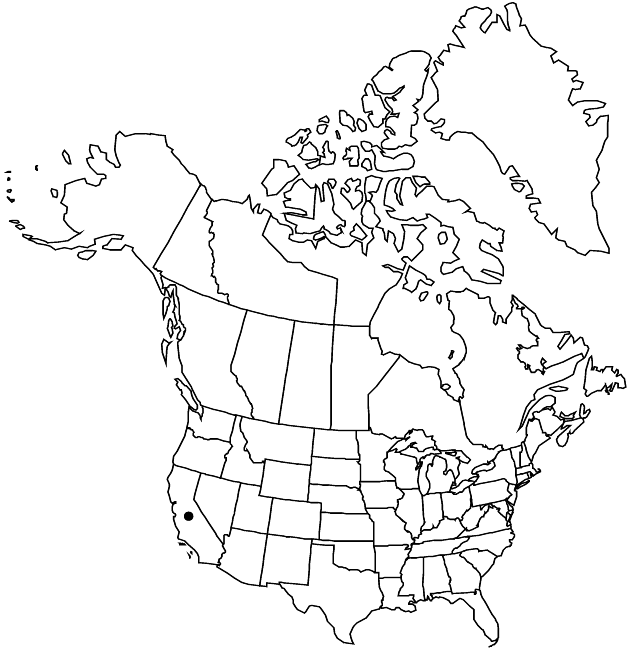Isocoma menziesii var. menziesii
Synonyms: Haplopappus venetus subsp. oxyphyllus (Greene) H. M. Hall Isocoma oxyphylla Greene Isocoma veneta var. oxyphylla
Stems erect or spreading, rarely decumbent; herbage glabrous, eglandular. Leaf-blades narrowly oblanceolate, 15–30 (–40) × 3–8 mm, not thick-fleshy, margins entire or with 1–2 pairs of teeth or shallow lobes distally. Heads in corymbiform arrays. Corollas 5.5–6.5. Cypselae 2.5–3.5 mm. 2n = 24.
Phenology: Flowering (Apr–)Aug–Jan.
Habitat: Chaparral, scrub communities, dunes or sandy flats, sandy arroyos, stream banks, edges of saline ponds, rocky canyon walls
Elevation: 0–400(–1100) m
Distribution

Calif., Mexico (Baja California), Mexico (Baja California Sur)
Discussion
Varieties vernonioides and menziesii appear to be completely intergrading. Glabrous or glabrate plants with entire leaves are identified as var. menziesii; those with leaves prominently toothed, as well as plants prominently villous but with more weakly toothed leaves, are identified as var. vernonioides.
Selected References
None.
Lower Taxa
None.
"thick" is not a number.
... more about "Isocoma menziesii var. menziesii"
introrse +
connate +
green +
distinct +
herbaceous +
scarious +
hirsute +
papillate +
corymbiform +
continuous +
decurrent +
1-nerved +
linear;oblanceolate or obovate +
ribbed +
cluster +
stigmatic +
barbellate +
persistent +
40;50 +
unequal +
absent +
yellow +
absent +
monomorphic +
5-11-ribbed +
dimorphic +
2.5mm;3.5mm +
staminate +
straight +
gland-dotted;gland-dotted +
distinct +
proximal +
18;25 +
bisexual +
dispersed +
Chaparral, scrub communities, dunes or sandy flats, sandy arroyos, stream banks, edges of saline ponds, rocky canyon walls +
discoid +
singly +
indeterminate +
eglandular +
not resinous +
glabrous +
surrounding +
obconic;turbinate or campanulate +
oblanceolate +
not thick-fleshy +
3mm;8mm +
sessile +
alternate +
cauline +
shallow +
erect +
deltate +
scarious +
2-carpellate +
inferior +
attached +
anatropous +
persistent +
tough +
thick +
absent +
connate +
1-nerved +
persistent +
distinct +
falling +
unequal +
developed +
not aristate +
small +
spinulose +
developed +
Phytologia +
1991 +
absent +
sterile +
epaleate +
pitted +
concave;usually flat;conic +
fibrous +
exalbuminous +
modifed +
2;4;6 +
alternate +
resinous +
gland-dotted +
decumbent +
triangular +
2-branched +
glabrous +
Isocoma menziesii var. menziesii +
Isocoma menziesii +
variety +
corymbiform +
goblet--shaped +
ampliate +
longer +
dark orange-resinous +
perennial +
subshrub +